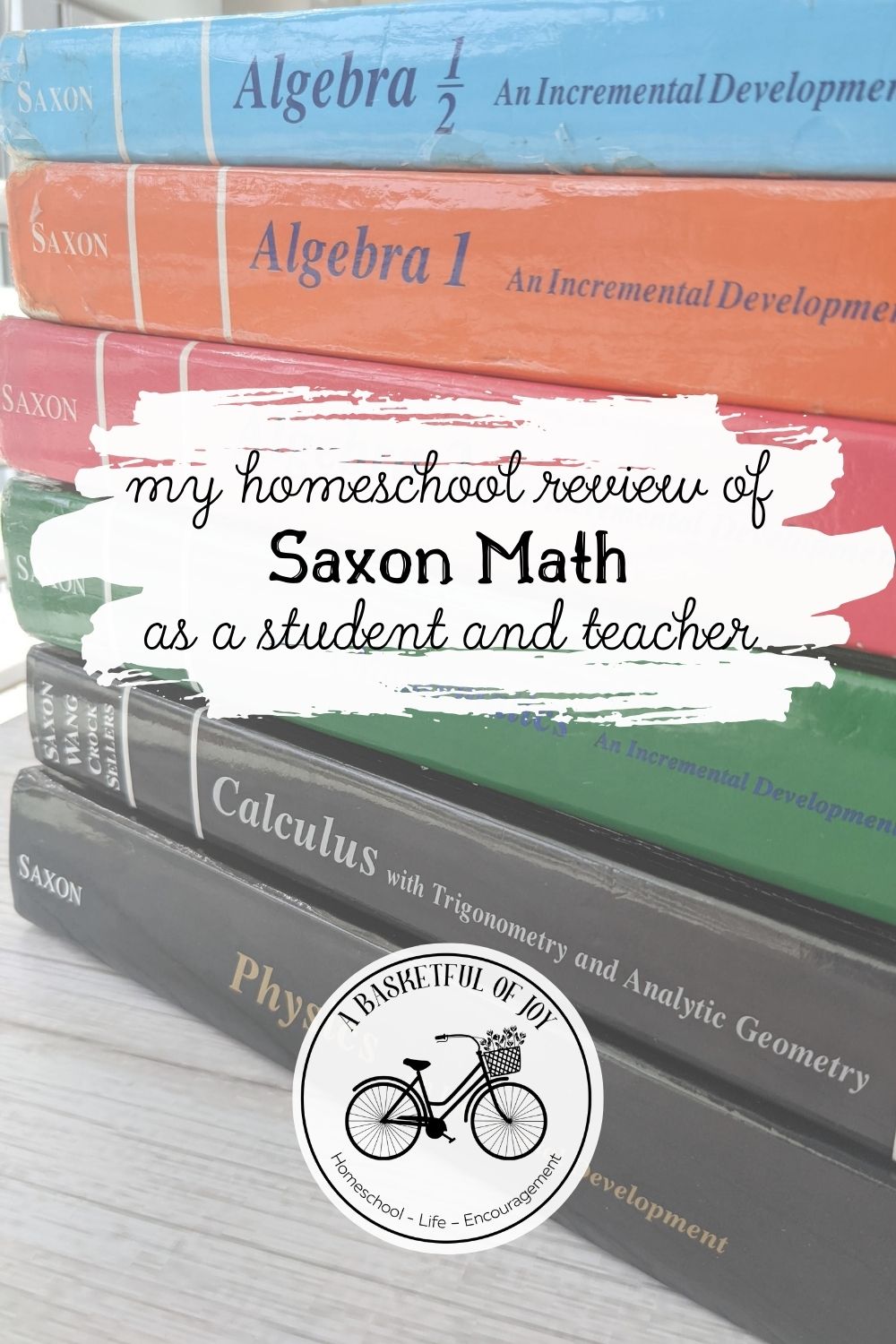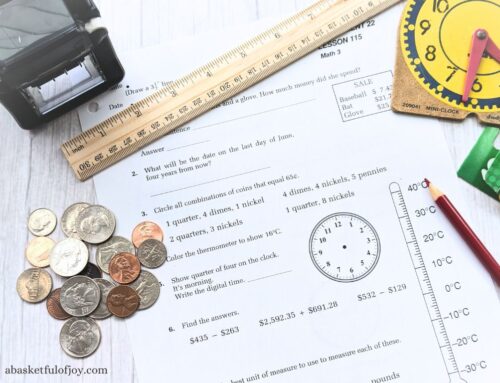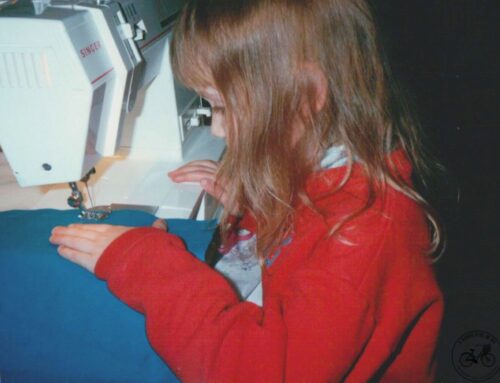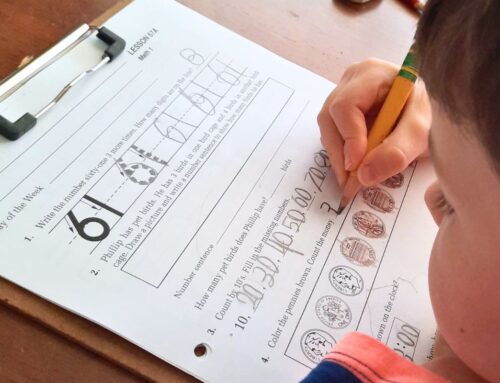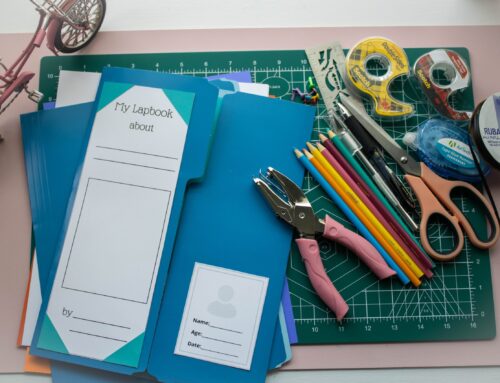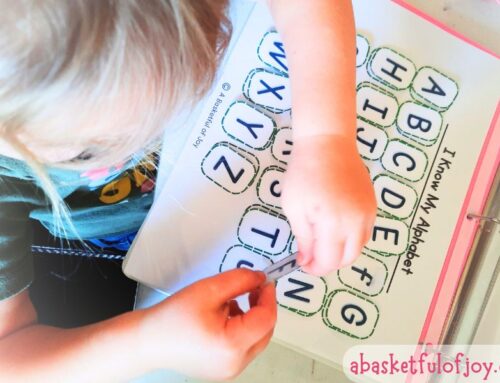Saxon Math Review by a Homeschool Teacher
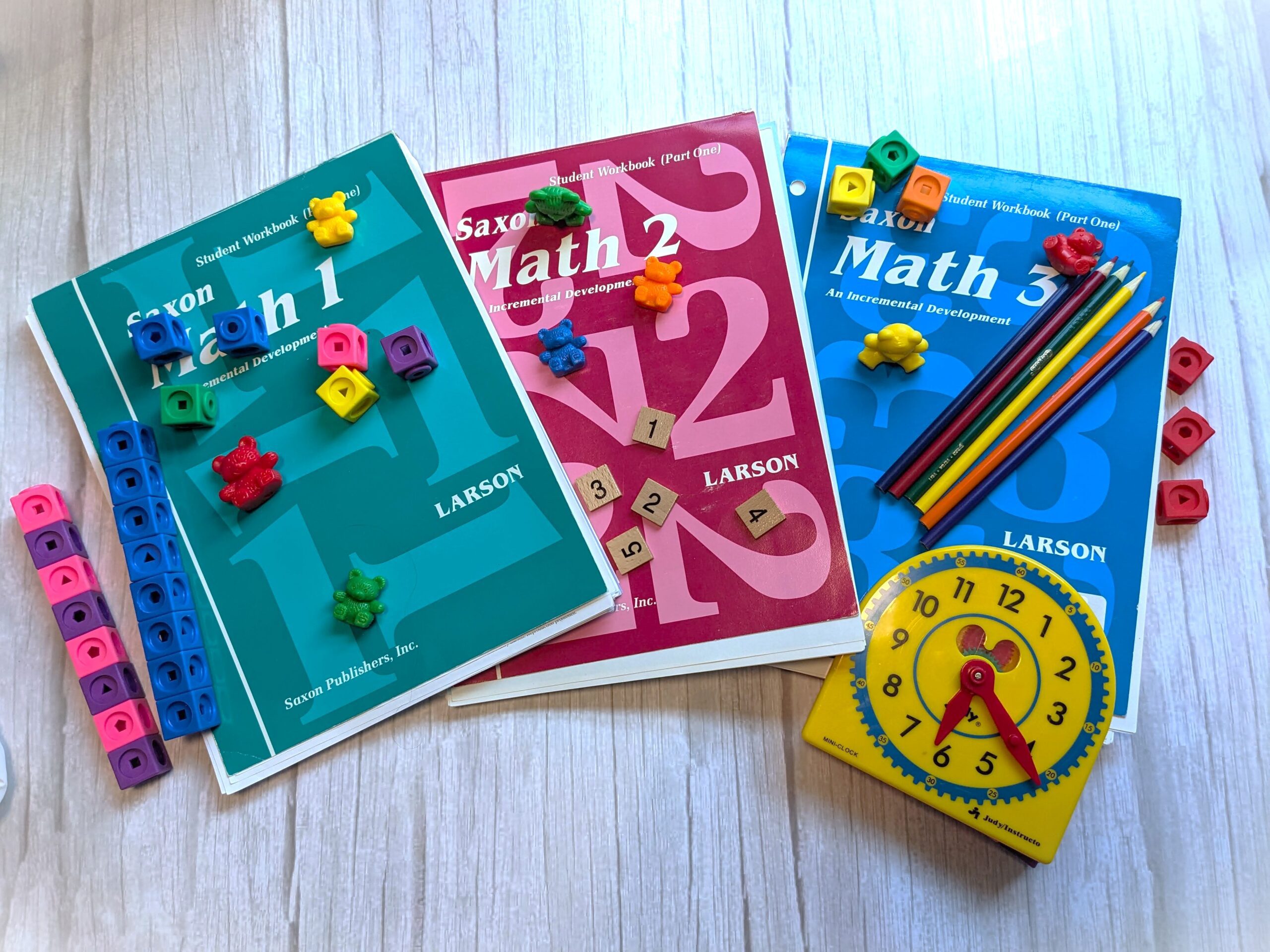
My last post was all about mine and my family’s Saxon Math journey. In this post I am sharing a review of each book we have enjoyed and why. These books all follow the wonderful spiral method that Saxon Math is known for. I know that Saxon math has multiple reviews both good and bad that can be so confusing. This review is based off my personal experience with this curriculum -as a homeschool student, tutor, and now teacher. I don’t get paid for this review, I just want to share my story and show you a quick behind the scenes into why I believe this is one of the best solid math curriculums available.
As a Christianbook affiliate, I am proud to bring to you the best homeschool curriculum at great prices. At no extra cost for you, my links simply support me, so I can continue to find wonderful books and products for your family.
Preschool/Kindergarten & 1st Grade
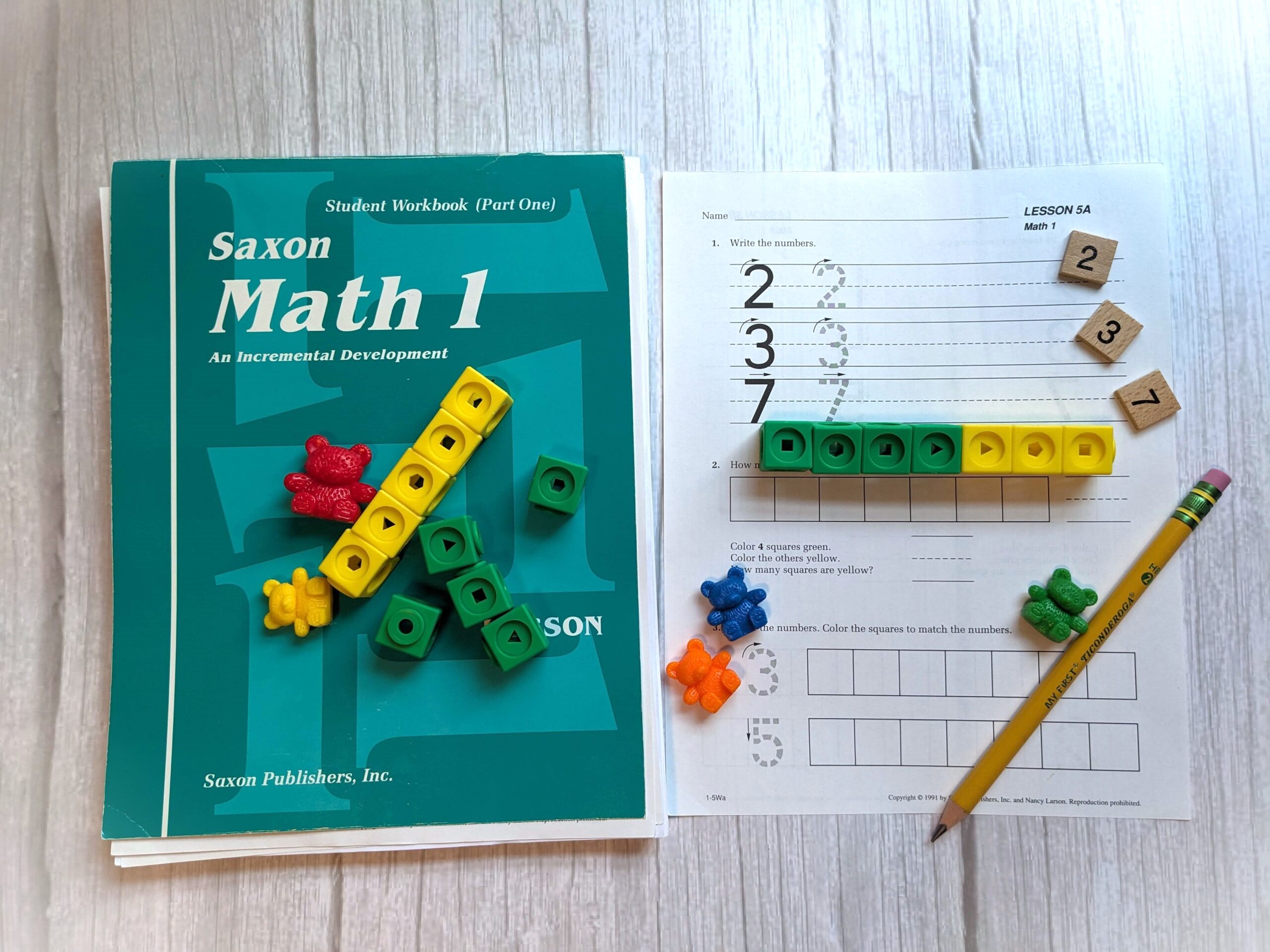
Every day there are opportunities to learn math. Most little ones are already singing their ABC song and wanting to learn the letter shapes. I personally get so excited when a 3 or 4 year old starts showing interest in numbers as well. We do counting games, organize counting bears by color, teach shapes, talk about how old they are and how old they are turning, count for hide and seek, add simple things like snacks, etc. There are so many ways to show how important numbers and other math concepts are in just normal life.
Once they show an interest it makes doing math so much easier. Saxon Math K is just basically the things I listed above. Playing counting games, introducing shapes with pattern blocks, learning colors, sorting toys, recognizing numbers, understanding a pattern, learning the days of the week and the months of the year and more. Just things that they see every day and are slowly getting used to with no writing necessary. There are ways they can be acting out a story problem and are learning adding and subtracting without much effort! In my years of teaching and nannying, I have found how much we are already naturally teaching them these things in every day life. In doing so, children are already developing a love of learning!
Now the cool thing is that when a child already know these basic things, they can be introduced to Saxon Math 1st! I know, it sounds crazy that your child isn’t even reading yet and can do math, but stay with me. Me and each of my older brothers and my younger siblings were not fully reading until after we finished Saxon Math 1st grade. It actually helped us to learn to read! My mom would read the word problems to us and we did the math, stamped or drew our pictures, and wrote the numbers. (*The cool thing is by the end of the book, we were reading much of the worksheet.) We did all the written work, but our mom did the reading. She would always say that there was no reason that we couldn’t do the counting and more just because we couldn’t read. Honestly, I am so grateful for this!
And it holds true to this day. I have loved coming alongside my mom and teaching my younger siblings and a few other little ones the same way. I love seeing how they grasp the problem after I tell them what it is asking them to do. They learn how to color the graphs, count the coins, stamp the number of animals needed, count the apple seeds to show ways to make the number ten, distinguish the difference between tallest and shortest, finish the shape pattern, and learn a bar graph. This sometimes is easier for some kids than reading as it is a different side of their brain. And when they get it – the confidence and joy in their voices when they realize they are having fun learning is beyond exciting!
Second & Third Grade
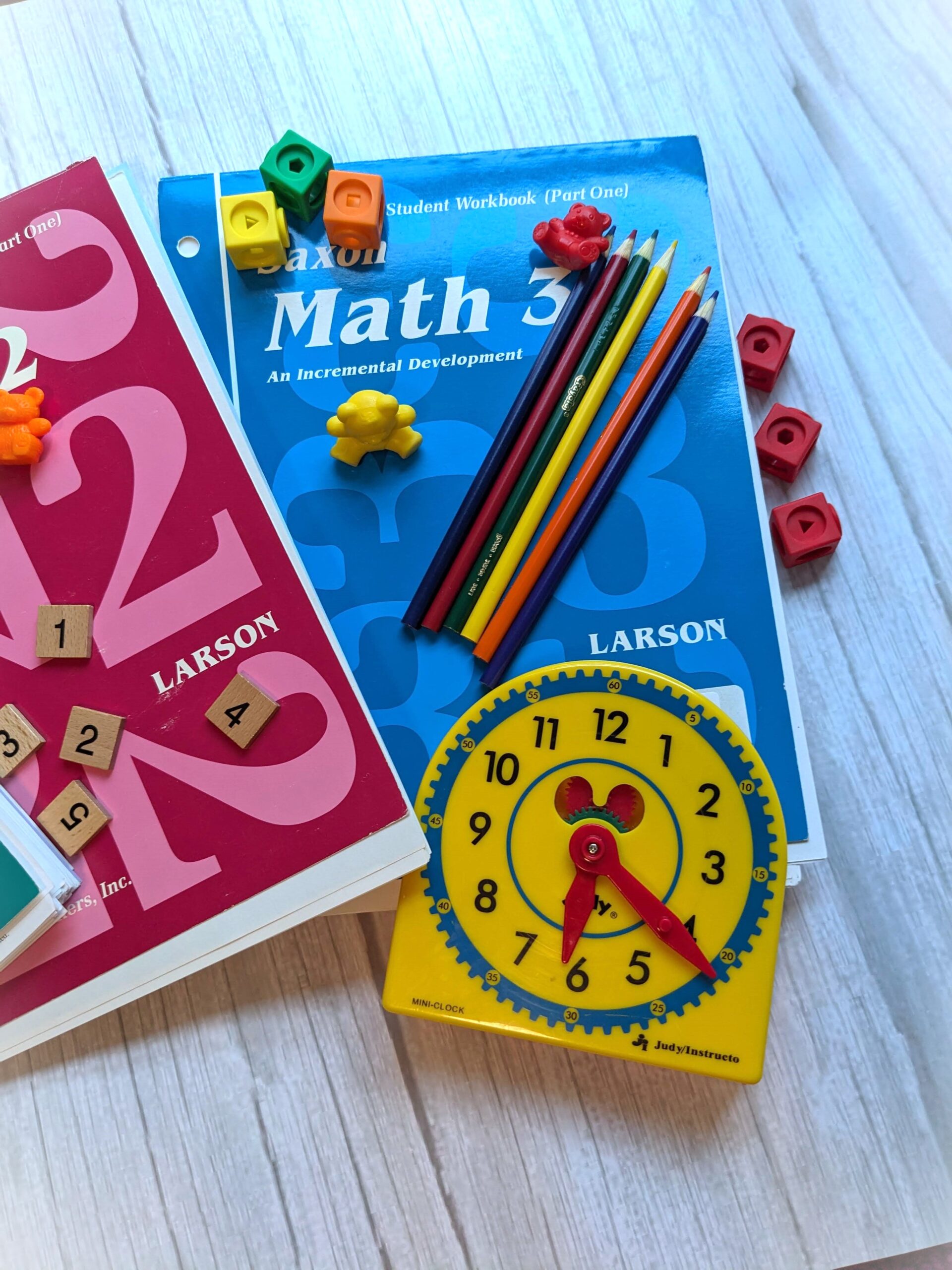
As a child moves on through Saxon Math 2nd, their confidence builds even more. They are reading most everything on the worksheet now and can do most of the second side of their lesson on their own. They will learn how to tell time at a higher level, understand more fractions, how to count even more money, understand a lot of geometry, learn to read the thermometer, and can work on more complex adding and subtracting problems as well as simple multiplication problems.
Second grade math is just so much fun. Children are more excited to do their work and it looks super easy but is just growing more on what they learned in first grade. There is a lot of mastering numbers and counting to 100 as well as learning to spell days of the week and months of the year. The graphs introduced in this level teach so much and are easy-to-understand story problems they can relate to.
Saxon Math 3rd does introduce new things as most third grade curriculum do, but it is so gradual that the student hardly notices. They learn larger number patterns, more multiplication and division problems, square roots, units of liquid measure, learning to read a recipe, beginning line graphing, lots more geometry, and one of the best life skills – writing a check! These things are so important in every day life!
My personal favorite introduced in Saxon Math 3 is these little sections in some lessons that the student gets to pretend to be the teacher. They get to find the errors in a small portion of a ‘completed lesson’ and correct them! I think this was what really sparked my love of teaching at such a young age!
And included in all these elementary math books is a special recipe that they get to make with help! From simple homemade peanut butter, to apple jack cookies, and even chocolate cake – this makes learning exciting and tasty even!
Fourth & Fifth Grade
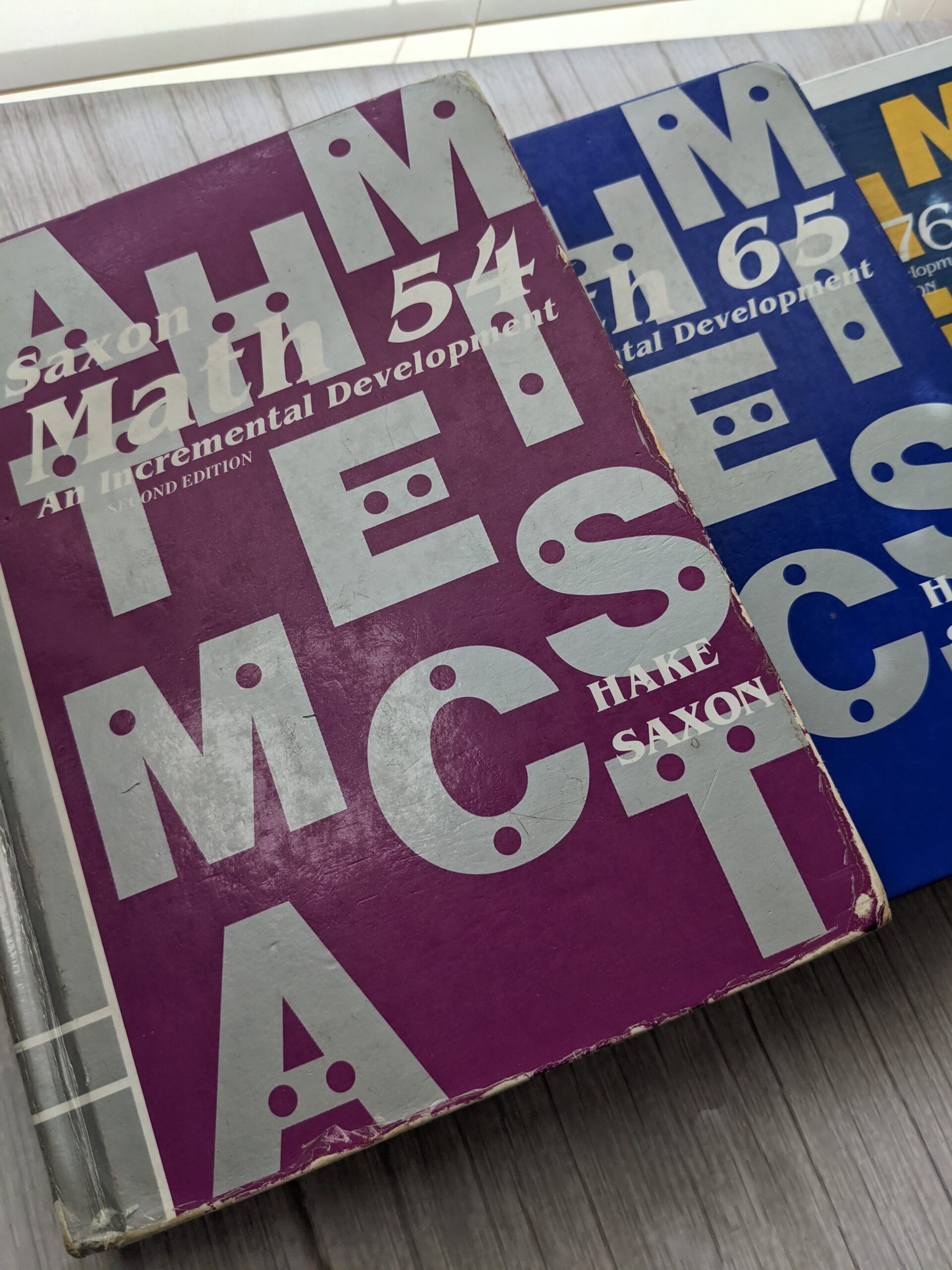
Now for the transition from reproducible lessons to working in a graph notebook and using a text.
The next book in the Saxon Math homeschool series is what is now called 5/4. As a younger student, my brother was not quite ready for the transition to using graph notebooks. My mom was able to call and request them to send her the printable resource meant for 4th graders to use in public schools. This book was called Saxon Math 4 and was just like the last three in the series as it was also reproducible. It took some convincing, but my mom was able to get this book, though it isn’t available publicly. This was such a blessing in our homeschool as it wasn’t intended for use in home. I do wish that it was still available, but just know it is not a requirement and your child will still do amazing with the material they learned in 3rd grade.
Each of us went on through Math 4 in this way and when it came time to go into 54 (now 5/4), my mom did allow some of us to test through it. This was just a refresher and gave us a quick introduction into using graph paper and notebooks. We did all the test and the practice problems, not the problem set. But also for extra summer work I did these small sets that were in the back of the book. It wasn’t that challenging as the math itself was very easy to me at the time…just a review of what I had already learned. Everything seemed so simple after doing Math 4, so this was just for extra practice and confidence building.
As a note, for fourth grade math, students will be excited to collect more necessary supplies. This book starts to teach a lot more geometry so they will need a compass, ruler, protractor, etc.
Sixth Grade-Eighth Grade
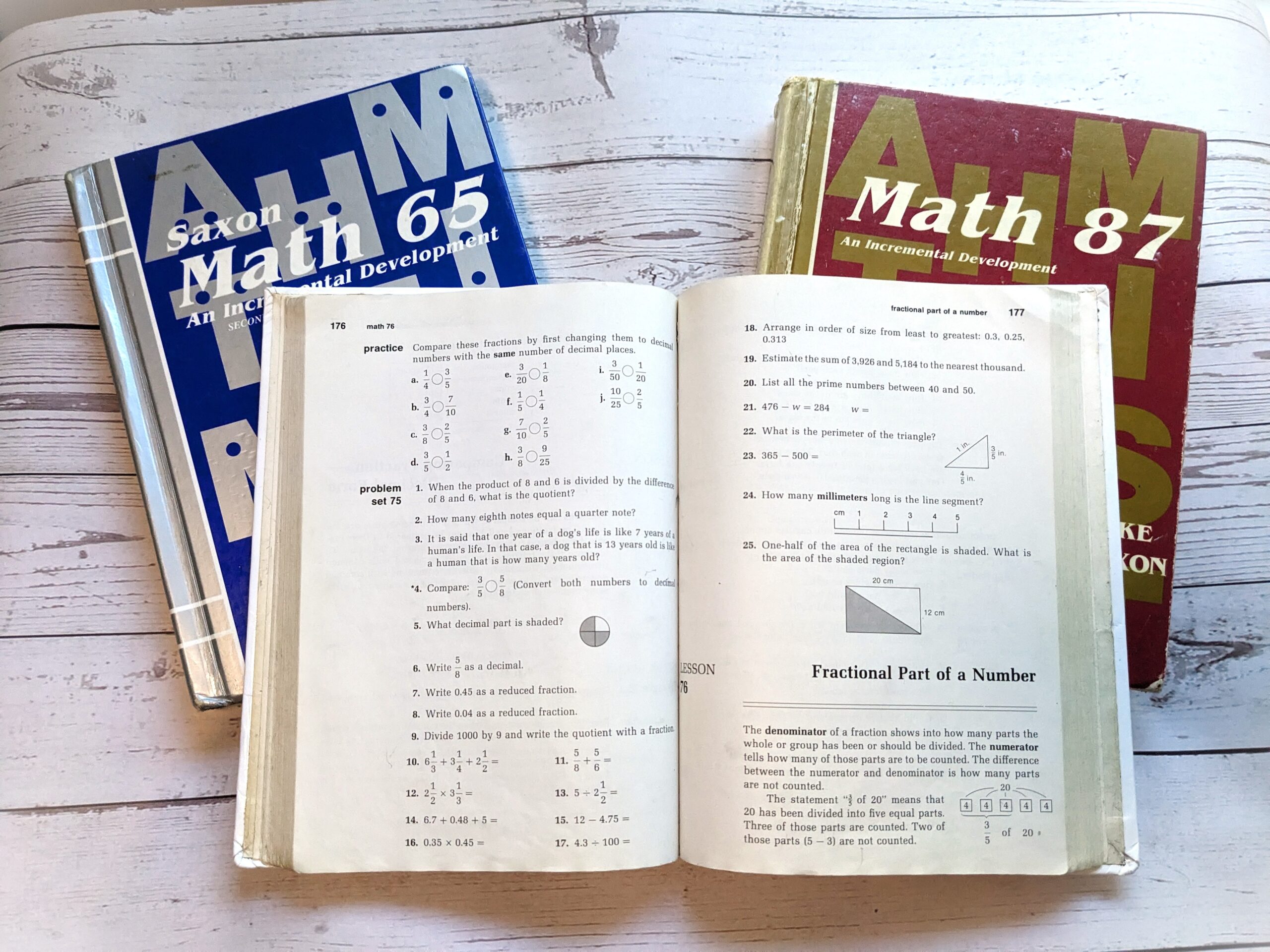
Saxon 6/5, 7/6, and 8/7 are all more gradual building on math skills with the same wonderful Saxon spiral method. One thing I just love about these books is how simply they are set up. There are not distracting pictures of any kind. The problems are laid out and easy to copy onto graph paper. The lesson are taught with simple steps and are built on in future lessons.
Students master more in-depth and multi-step word problems, overcome any fractions and decimal place values, get excited about geometry, learn order of operations, master Roman numerals, multiply scientific notation, and get introduced to a calculator!
I so love the older editions of these books and always will as they were the ones I have done and I have taught. I have looked at the new third editions and I do like some of the added features. One of which is the addition of a solutions book for each of these texts, though they are not necessary, these are nice. This will make it easier on teachers and moms everywhere to show the student where they went wrong in the problem and help them to master that area of work. The other thing I like is the added lesson numbers under each problem in the problem sets. That is to help the student know what lesson they learned that topic and they can flip back to familiarize themselves with that topic.
A few more things I have noticed in these newer books is the added investigations that are just like a more exploratory way to learn about a certain math concept. Also they have supplementary practice problems in the back of the book, much like the older editions did, that teach more on one topic if a child needs more practice. I also love the illustrated glossary!
All this to say, you won’t go wrong with the Saxon math books. But I do personally enjoy the older editions that I have pictured here and I know for sure they do not have any common core incorporated in them. So if you find them at a homeschool consignment store or a homeschool book swap, they will still be a wonderful benefit in your homeschool!
Math Tips and Tricks
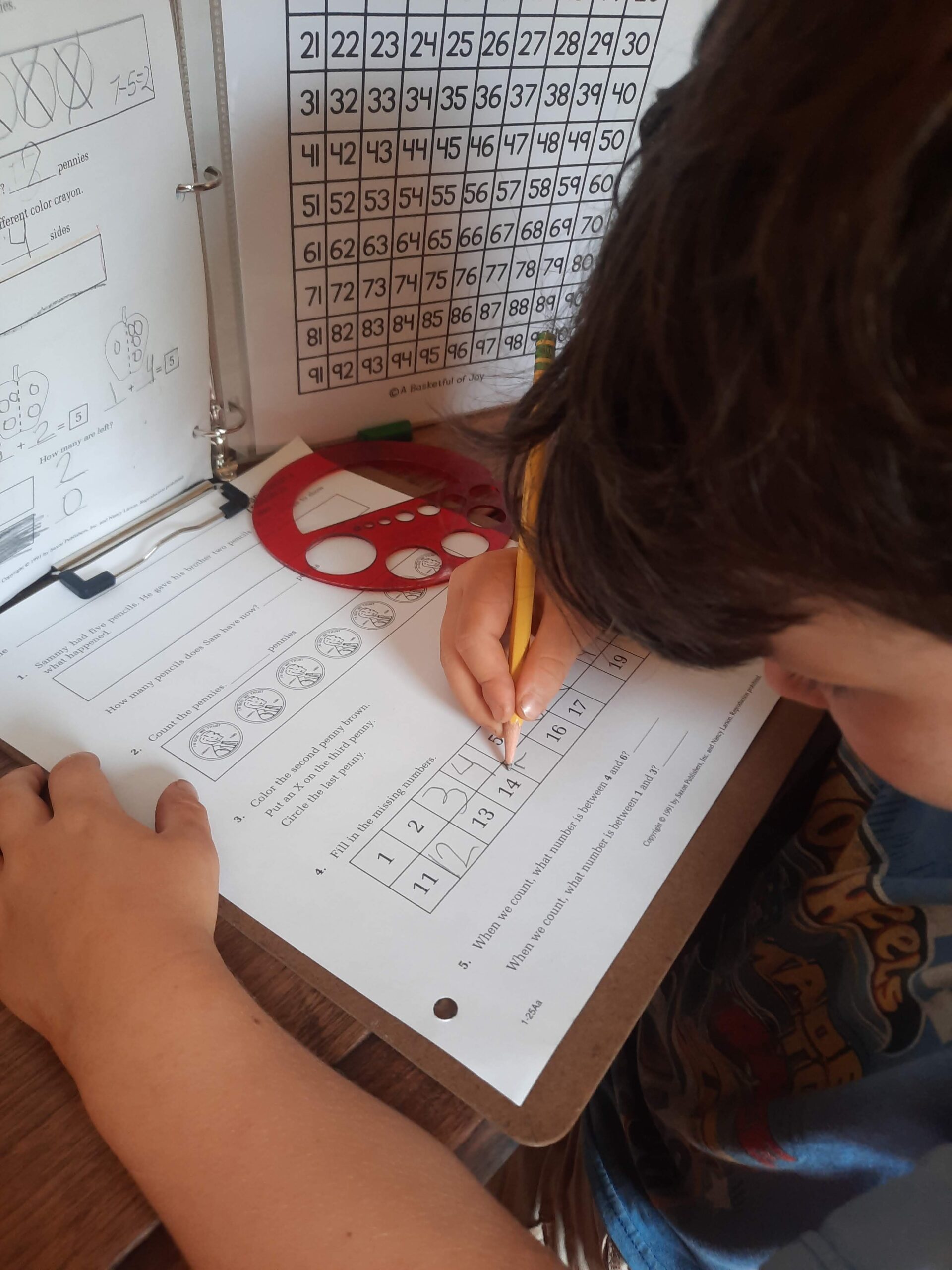
Here are a couple of math tips that have helped me over the years. When starting the text books, we have found so many ways to make it easier as students. The first was using two graph notebooks, though you may be fine with one for 6/5 and 7/6 until the child needs to have more work space. We would set up one notebook for the answers to the problem sets and one for the work. As with all math, the best thing is to have the student show all their work so they know where they made an error. Keeping it neat is also very important! I try to teach one digit in every square of the graph page and to copy the problem down completely before trying to work on it.
We also like to use cook book stands to put the text books on. This has helped keep the student’s posture better as they are sitting up straighter and not hunched over. Mechanical pencils are a great tool and having their own set of geometry supplies like rulers, protractors, and a compass is very helpful.
Also, one very useful thing we have discovered is to have your child have their own chart notebook! This is a notebook of all the charts they have copied from the back of the text, all the formulas needed for geometry, etc. You can use a small index card book to write formulas in if that is easier.
Most importantly, each child must do all the lessons and investigations in order and without skipping. This is crucial to mastering all the concepts taught and building the confidence they need to move on through their level. If your student is very focused and does well on the regular problem sets, there is no need to do the additional practice sets in the back of the book. If the work is still too easy for them, have them to do a few of the test until they do not understand what is being asked and they can start from that lesson in the text book. So for example, if your student knows all the material covered in the test up through test 8, but then struggles a bit in test 9, then have them start on the lessons that immediately follow test 8 in the text.
As for taking the test, these are super simple to do on graph paper and are actually quite fun. Many of them are easier than the actual lessons because the student takes them after mastering the problems taught over the last ten lessons.
There are so many, many things that I can recommend for math as I personally love it and love teaching it. When I see a student light up when something makes sense, it gives me so much joy. Math should be fun as it is so necessary and valuable in every day life!
Highschool & College
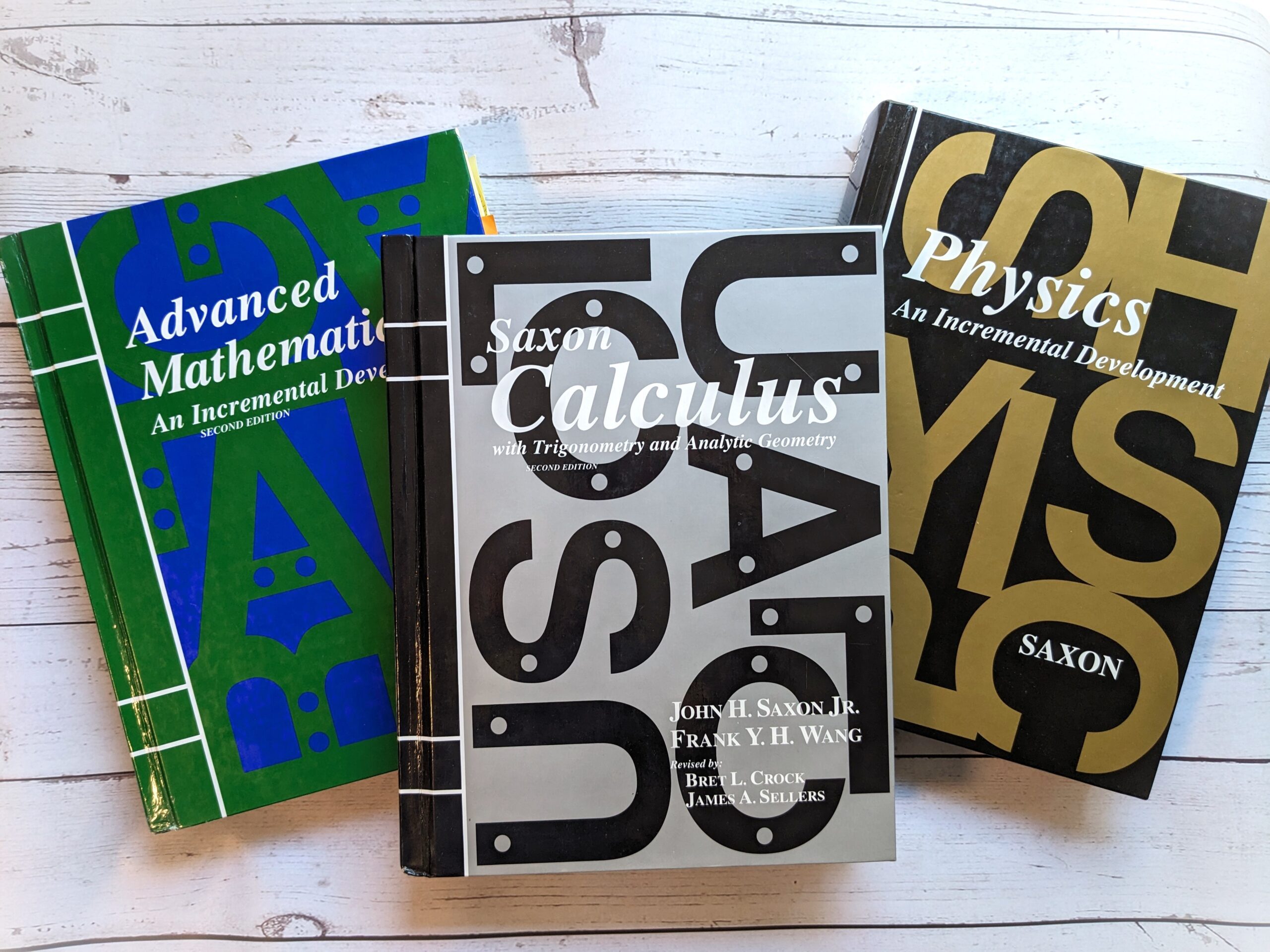
Saxon’s Alegbra ½, 1, and 2 are by far some of the best Algebra books I have seen. Seeing how fast these books build on previous concepts is very encouraging to the student. There is never too much taught at one time and each topic covered is consistently practiced over and over again until they master it and move on to a higher level.
Following the same way from previous text, students will need graph paper and graph notebooks. At this age and math level it is fun to see them set up their work and answers the best way that suits them. By Algebra 2, I have allowed my students to use the solutions manual on their own to help them through the problems, but never for use on the test as I want to see where they are needing a bit more tutoring.
Making sure your students have a good scientific calculator is also crucial for their work. The Casio brand is our favorite for those.
Near to the end of Algebra 2 and throughout the college books, they will need a graphing calculator. Our favorite brand for those is Texas Instruments.
These books, I believe, have a fair amount of geometry taught in them as well. Advanced Mathematics continues that on and students will be mastering geometric proofs by the end of that book!
For college at home, we chose to continue our math studies and we purchased Saxon’s Physics and Calculus. These are definitely for the more math-focused students who desire a more vast level of logic and sciences.
Math Thoughts
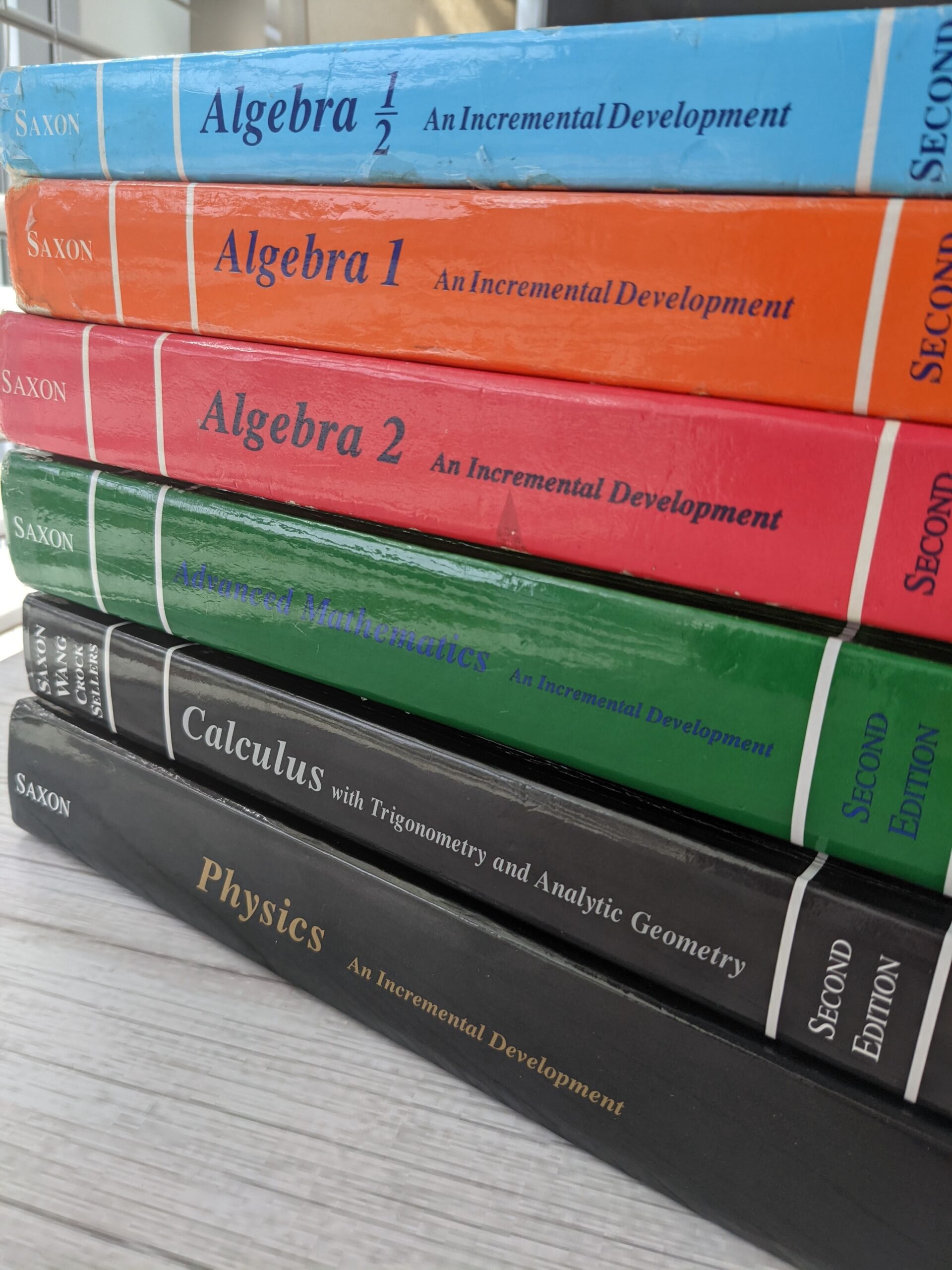
I love math and I love to share all the things that have helped me over the years – first as a student and then as a teacher. Currently, I love teaching now three different levels of math and showing these special kiddos how they can do it and it isn’t hard; though it may be a challenge, challenges grow us!
I have found that if you approach math as fun, they will too. I have seen children’s minds change when they begin to actually understand and master what they thought was too hard. It is a great blessing to me when I hear a child say “I love math!”
My hope and prayer for this post is that you feel encouraged in your math journey. Whether you are using Saxon math, another math curriculum, or still deciding on what works best for your family, please know you can do this and they can as well. Math is a wonderful way to tap into the logic side of children’s minds and teach them to become great problem solvers in every day life.
Teach me more about you, how you work and how you move,
so that I can walk onward in your truth until everything within me brings honor to your name.
Psalm 86:11 TPT
Subscribe to my newsletter:
By submitting this form, you are consenting to receive marketing emails from: A Basketful of Joy. You can revoke your consent to receive emails at any time by using the SafeUnsubscribe® link, found at the bottom of every email. Emails are serviced by Constant Contact

